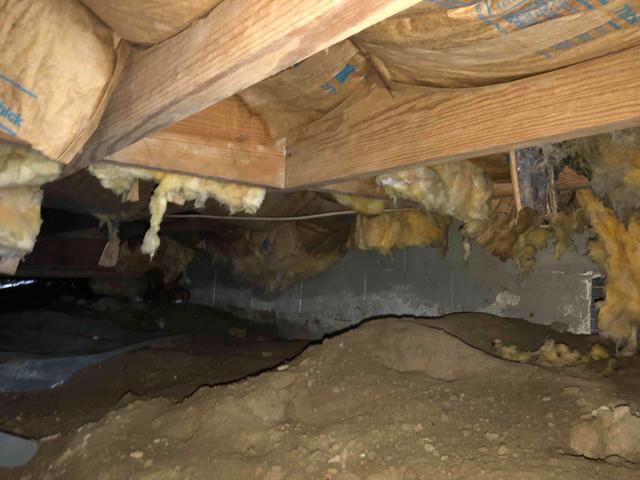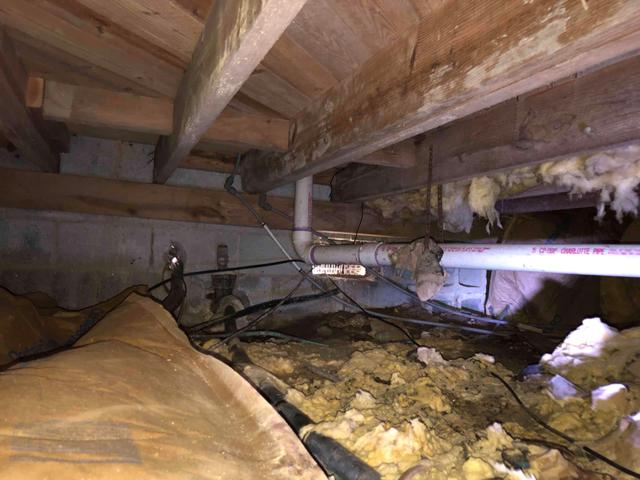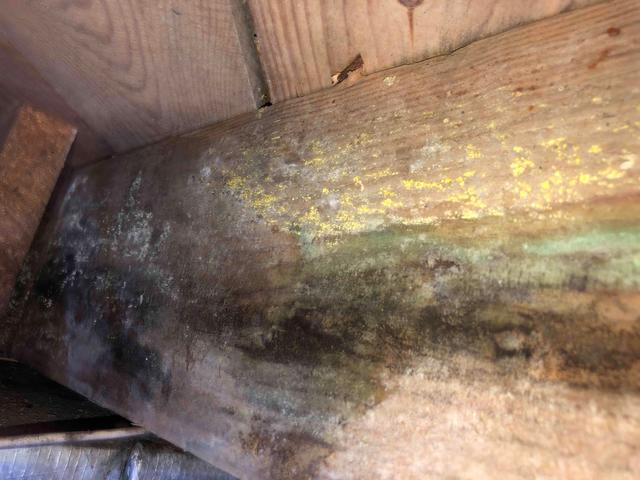
Insulation Installed Backward
The fiberglass batts have been installed backward. The paper backing should be touching the surface that is being insulated, in this case, that is the floors. In addition, for the insulation to be effective it should be enclosed on all sides. Therefore, leaving it in an open cavity greatly diminishes the effectiveness of insulating the floors and keeping them warm.

Fallen Insulation
The fiberglass insulation has deteriorated and fallen away from the floor joists. As moisture floods into the crawl space through open vents and water vapor rises from the earth, this moisture is absorbed, like a sponge, by the fiberglass batts. The retained moisture damages the fibers and results in the layers of the material pulling apart from itself. The saturated insulation becomes heavier and holds moisture against the metal rods holding it in the joists, eventually rusting through them. The weight of the insulation makes it sag and eventually fall.

Mold Candy
The high relative humidity and warm temperatures in the crawl space allow for microbial growth to occur. Mold loves the paper backing of fiberglass insulation it's referred to as mold candy. The mildewed insulation is sitting right against the floor of your home and impacting the indoor air quality of your home. As air Is pulled up into your home through the stack effect, 50% of the air in your home comes from the crawl space, and its bringing pollutants and allergens with it impacting the air quality of your home.

Mildew/Mold Growth on Joists
Saturated insulation holds its moisture against floor joists. Since floor joists are an organic material, they are a food source for microbial growth. Saturated joists can become an even bigger problem for homeowners if left untreated. At 19% wood moisture content, the potential for wood rot begins, compromising the integrity of the joist, and your floors.

Missing Vapor Barrier
This crawl space has little to no vapor barrier in it. The purpose of a vapor barrier is to impede water vapor from rising out of the earth and into the crawl space. Without a properly sealed barrier, the moisture in the earth will continue to rise into the crawl space environment, raising the relative humidity and ultimately contributing to microbial growth, the deterioration of insulation, and poor indoor air quality.

